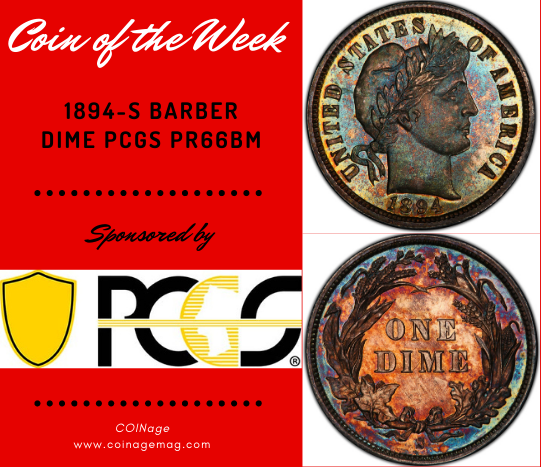
The 1894-S Barber dime is one of the most storied United States rare coins, with only 24 minted and just nine specimens accounted for today. Yet, for all the information numismatic experts can verify about this famous coin, little is known about its origin. Why were just 24 specimens struck? What happened to these coins? And why do fewer than half of these proof pieces survive?
Mint historians have been trying to crack the story behind the 1894-S Barber dime for generations. One of the most oft-told stories about the coin is they were ordered for production by San Francisco Mint Superintendent John Daggett, who needed to balance mint books after ledgers were short by $2.40. So he struck 24 specimens and gave them as gifts to associates, along with three that he gave to his daughter Hallie. Legend says Hallie promptly spent a dime on a dish of ice cream and saved the other two. While the story has become well cemented in numismatic lore, many scholars don’t believe it to be true and have spun other theories that have largely proven to have their own holes.
The truth is, nobody at this point seems to know exactly why the 1894-S Barber dimes were struck or what happened to them after they were minted. The fact these coins are classified as proofs, which the San Francisco Mint did not customarily strike at that time as a branch mint (relating to the “BM” in the grade of this coin), suggests these coins may have been minted for some type of special purpose. Perhaps they were presentation pieces or minted as gifts to persons of important sociopolitical standing. That only 24 were made — when the San Francisco Mint had originally been sent enough 1894-S dime dies to strike tens of thousands — is further curious still.
This coin’s legendary status and outstanding rarity have made it a significant coin for generations of numismatists. So, when an example comes up for sale, bidding action is usually quite fierce. In September 2020, an exceptional specimen took the stage at a Heritage Auctions sale, drawing a massive seven-figure bid. The example featured here, graded by Professional Coin Grading Service as PR66, commanded a spectacular $1,500,000, placing it among the elite coins that are worth more than $1 million.












